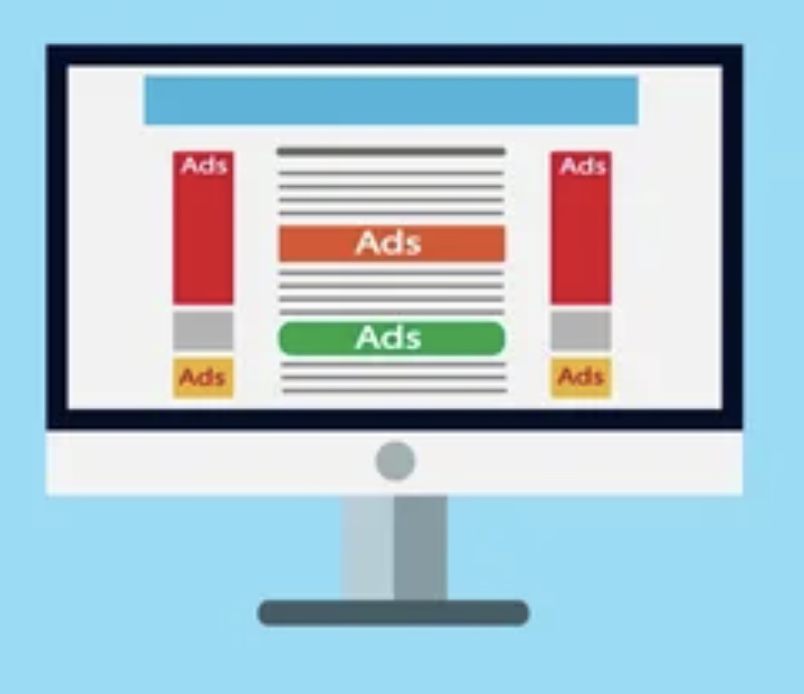Video and display ads are the two most popular advertising formats right now that are making publishers big bucks.
Video ads are booming right now. Some estimates claim that it will overtake all other digital ad formats in just a few years. There are many different ad servers available to the publisher, but they cannot all handle video ads effectively. Video ads require high-bandwidth, dedicated servers to handle high traffic levels and load times for these ads. The two types of ad servers are video ad serving platforms, which specialize in video ads and display ad serving platforms which typically serve most ad formats.
Today, most mainstream ad servers can serve display ads as well as video ads fairly easily, despite the difference in the end result. There are a few significant differences to understand about both video & display ad servers which we’ll be covering in this article.
Keep reading to get all the deets about Video Ad Servers & Display Ad Servers.
Definition Breakdown
Video ad servers are the middlemen between publishers, who publish video content on sites and apps, and the advertising companies that want to advertise on those sites and apps.
Video ad servers primarily facilitate the delivery of in-video ads. This can be done through programmatic methods: targeted videos can be served based on an audience segment’s demographic information collected via cookies, or on the popularity of a particular piece of content among users.
A display ad server will only serve ads for display (i.e., banners and other units that appear above the fold).
Do Video Ad Servers equal Display Ad Servers?

Video ad servers and display ad servers have a lot of similarities, which is understandable since they were designed to do the same thing: serve ads. Adding video to the mix wasn’t a big strain on most existing ad servers’ technological resources, so there was no reason not to do video ads.
99% of the publishers we’ve served want to run both video ads and display ads.
The same is true for advertisers – they want to reach their target audiences in several ways, and both video & display ads convert powerfully.
When you use one of the hosted ad servers out there, there’s a good chance they can serve both display ads and video ads to your site. In fact, it would make little sense for any providers of hosted ad servers to only be able to serve one or the other. Why would they want to limit their potential revenue streams? They want their customers to be successful, after all.
So if you’re using Google Adsense or other ad servers, there’s no reason to believe that you won’t be able to serve ads from them that are both display and video at some point.
A few minor differences exist between display and video ads in terms of the technology required to serve them.
Video Ad Servers vs Display Ad Servers: Main Differences

Let’s take a look at the differences between display ad servers and video ad servers now.
Display ads are simply static images which may be a bit boring from the dynamic video ads.
Additionally, it distinguishes a display banner ad from a video player that’s either embedded in or hovering alongside your blog’s content.
This is the main difference between video ads & display ads.
The rest of the expression is mostly the same- there’s always a publisher. Advertiser, ad creative copy, ad server, and user.
The difference between the two server types is ultimately a technical one, though it’s one that could have a big impact on the design of your video advertising campaigns. It all comes down to what particular ad tags you choose to use, and how your team plans on implementing them in your website code.
Your ad server can be set up to receive requests for both video and display ads. But to be video-capable, it needs to be able to retrieve video ad requests from video players.
That means you’ll need to use a specific type of tag—the VAST 3.0 tag, or an IAB-compliant tag—for any player that will be serving video ads.
The difference between using these tags and using traditional display-ad tags is nuanced but important: when an ad request comes through the VAST 3.0 or IAB-compliant tags, the ad server is able to recognize that it’s being asked for a video ad, and it knows which players are capable of handling those ad requests.
It then automatically routes the request accordingly without needing any further information from the player (meaning no action on your part).
If your site will be used for serving regular display ads (banners), then a display-capable ad server will do the trick.
Other than that, the differences are trivial. Most publishers and users don’t care much about the differences.
Related Read: https://www.monetizemore.com/blog/video-monetization-strategies/
Justifying Dedicated Video Ad Servers
If video ad servers and display ad servers are almost the same thing, what’s the purpose of dedicated video ad servers? This is because some publishers focus on video content mainly, thus they want video-oriented ad servers which will help them accommodate the latest video ad unit types to go deeper into video analytics, reporting, and video forecasting.
With the advancement of digital video, publishers want to maximize their earnings per impression, and as a result, they want to make sure that their inventory is as premium as possible.
To increase their revenue potential, publishers are looking for methods to diversify the ad units that they sell on their site by offering more video ad unit types. This is one of the reasons why some publishers prefer to use dedicated video ad servers.
Video ad servers are designed to accommodate the latest in video ad unit types, giving publishers the flexibility to sell a wide range of video ad inventory types.
Video metrics include completion rates, average view duration, views per visit and more, which just don’t make sense for display ads. A video-specific ad server provides publishers with unparalleled control over the implementation of their inventory so they can maximize yield and drive results across all platforms; desktop, mobile web and even connected TV devices.
In the end, the only reason to pursue a dedicated ad server is if you will never run any other type of ad. But that has a high chance of limiting your ad revenue streams.
It may save you some hassle if you choose an ad server that can accommodate both display and video ads since most publishers cannot guarantee they will always use one type of ad campaign.
MonetizeMore can give you the best of both worlds
You can’t always assume that display ad servers and video ad servers are totally different setups since 99% of decent ad servers provide both while killin’ it in the video & display game.
It is important to keep in mind that servers differ, and video-only publishers may benefit from a dedicated video ad server because it is more powerful and provides better reporting and reporting capabilities.
When it comes down to using both or only one ad server, you probably won’t go wrong with an ad management partner that can improve your revenue with both these ad servers.
It’s crucial, however, that you loop it into an ad tech stack that maximizes your ROI.
The result is an increase in revenue from both video and display ads, as well as an increase in overall earnings from each page view.
For advertisers, you’re reaching your target audience more effectively as well – after all, why choose between video and display if you can have both?
Need help setting up your video ads? Sign up to MonetizeMore today!
source https://www.monetizemore.com/blog/video-ad-servers-vs-display-ad-servers



0 Comments